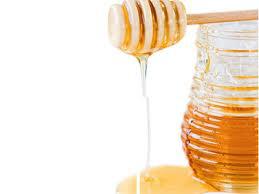
HONEY FOR HEALING...
A recent study reports Manuka Honey
from Australia Effective For Treating
and Preventing Wound Infections
Manuka honey could help clear chronic wound infections and even prevent them from developing in the first place, according to a new study published in Microbiology.
These important findings provide further evidence for the clinical use of manuka honey to treat bacterial infections in the face of ever-growing antibiotic resistance.
Streptococcus pyogenes is a normal skin bacterium that is frequently associated with non-healing (chronic) wounds. Bacteria that infect wounds can clump together forming biofilms, which form a barrier to drugs and promotes chronic infection. Researcher scientists at Cardiff Metropolitan University have shown that manuka honey can destroy fully-formed S. pyogenes biofilms in vitro and also prevent the bacteria initially binding to
components of wound tissue.
Honey has long been acknowledged for its antimicrobial properties. Traditional remedies
containing honey were used in the topical treatment of wounds by diverse ancient civilizations.
Manuka honey is derived from nectar collected by honey bees foraging on the manuka tree found growing in New Zealand and parts of Australia.
It is included in modern licensed wound-care products around the world. Manuka honey has
been reported to inhibit more than 80 species of bacteria, yet the antimicrobial properties of honey have not yet been fully utilized by modern medicine. Its unique mechanisms are not fully understood.
Wounds that are infected with S. pyogenes often fail to respond to treatment. This is usually due to the development of biofilms which may be difficult for antibiotics to penetrate as well as the problems of antibiotic resistance. The results of the study showed that very small concentrations of honey prevented the start of biofilm development and
that treating established biofilms grown in Petri dishes with honey for 2 hours killed up to 85% of
bacteria within them.
The Cardiff research team are working towards providing molecular explanations for the antibacterial action of honey. The latest study reveals that honey can disrupt the interaction
between S. pyogenes and the human protein fibronectin, which is displayed on the surface
of damaged cells. "Molecules on the surface of the bacteria latch onto human fibronectin, anchoring the bacteria to the cell. This allows infection to proceed and biofilms to develop," explained researchers involved.
"We found that honey reduced the expression of these bacterial surface proteins, inhibiting binding to human fibronectin, therefore making
biofilm formation less likely. This is a feasible mechanism by which manuka honey minimizes the initiation of acute wound infections and also the establishment of chronic infections.
Ongoing research is investigating how Manuka honey has also been shown to be effective at killing bacteria.other wound-associated bacteria including Pseudomonas aeruginosa and meticillin-resistant Staphylococcus aureus (MRSA).
Applying antibacterial agents directly to the skin to clear bacteria from wounds is less costly than systemic antibiotics and are believed to potentially complement antibiotic therapy in the future. This is
very important bescause chronic wounds account for up to 4% of health care expenses in the developed world."
Story Source:
Society for General Microbiology
Journal Reference:
Manuka honey inhibits the development of Streptococcus pyogenes biofilms and causes
reduced expression of two fibronectin binding proteins. Microbiology, 2012;
Society for General Microbiology (2012, January). Honey could be effective at treating and preventing wound infections.
This article is for informational and educational purposes only; It is not intended to provide medical advice, diagnosis or treatment. Consult your doctor orhealthcare professional.
